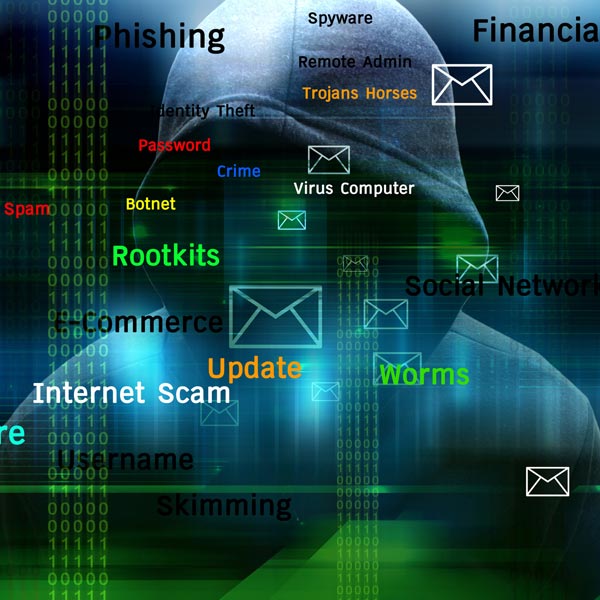Are You Protected Against The Most Common Types of Cyber Attacks?

 As technology gets ever more sophisticated, so do different types of cyber attacks.
As technology gets ever more sophisticated, so do different types of cyber attacks.
The FBI reports there’s an average of 4,000 successful ransomware attacks every day. This figure, however, pales in comparison to the 1 million new malware threats that are released daily.
The truth is that the Internet can be a dangerous place. If you aren’t actively protecting your computers, you’re leaving your business wide open to many types of cyber attacks.
In this post, we’ll reveal the five most common types of cyber attacks, along with how to protect your business.
1. Phishing Attacks
Like a fisherman dropping bait into the water, phishing attacks try to lure unsuspecting people into revealing personal information.
Phishing scams usually arrive as an email from a seemingly legitimate source. They ask the user to click on a link (supposedly to the company’s website) and update their credit card information or password.
To avoid being fooled by a phishing scam, be wary of any email that asks you to log in and enter personal information. Legitimate companies will almost never contact you to ask for this directly.
2. Malware, Spyware, and Ransomware
Malware and spyware are types of malicious software that tries to gain unauthorized access. It often appears in the form of a new type of software or a “fake” antivirus program.
Ransomware, as the name suggests, completely locks down your system. It then holds your information “hostage” until you pay money to “release” it.
Be sure everyone in your office is using updated anti-malware software from a trusted source.
3. Cyber Fraud
Cyber fraud is especially sneaky because it often appears to come from a supervisor or manager.
Generally, it’s a request (including a legitimate-looking authorization) for you to transfer money. Those who work in the treasury or accounting departments are most likely to receive these types of cyber attacks.
If you receive a notice to move a large sum of money, always confirm with the appopriate individual making the request before you approve the transfer. It could save your company a lot of money.
4. Prevent Damage from Cyber Attacks
Aside from physical data theft, businesses are also at risk of online criminals. Hackers are looking to compromise data in the cloud. Others use Distributed Denial of Service (DDoS) attacks to disrupt your operations.
These types of hacks and attacks not only steal your data but also cause data damage. This loss of data makes it tough to work because you’re not sure about the accuracy of your data. Backup and recovery solutions restore all your lost or damaged data.
4. Social Media Scams
Threats from social media usually present in the form of a friend request or a request to install a certain app.
Once you accept the request, the hacker can do anything they want with your account. Gleaning passwords and creating public embarrassment for the company are two of the most common goals.
Stay up-to-date with the latest social media threats and educate your staff about them. They should also know never to use corporate information, logins or passwords for their social media accounts.
5. Advanced Persistent Threats (APT)
Also known as spear-phishing, these attacks often go out to all employee emails. The hacker is betting that at least one of your unsuspecting employees will click on a Trojan attachment.
Once the program is up and running, it can compromise that employee’s computer (and everyone else’s) in a matter of hours.
Detecting and preventing these types of attacks can be challenging. This type of attack is where the assistance of managed IT services comes in handy.
Defend Against All Types of Cyber Attacks
These are a few of the most common cyber attacks your business may encounter.
How can you keep yourself safe in an increasingly unsafe cyber environment?
Let the experts at Sagacent Technologies advise you. Contact us today to discuss cybersecurity, IT, or any other concerns you may have.
Sagacent Technologies offers technology management and support, including proactive/preventative maintenance, onsite and offsite data back-ups, network and security audits, mobility solutions, disaster planning and emergency business resumption services. The company serves clients of 10 to 150 employees within the Silicon Valley region.

